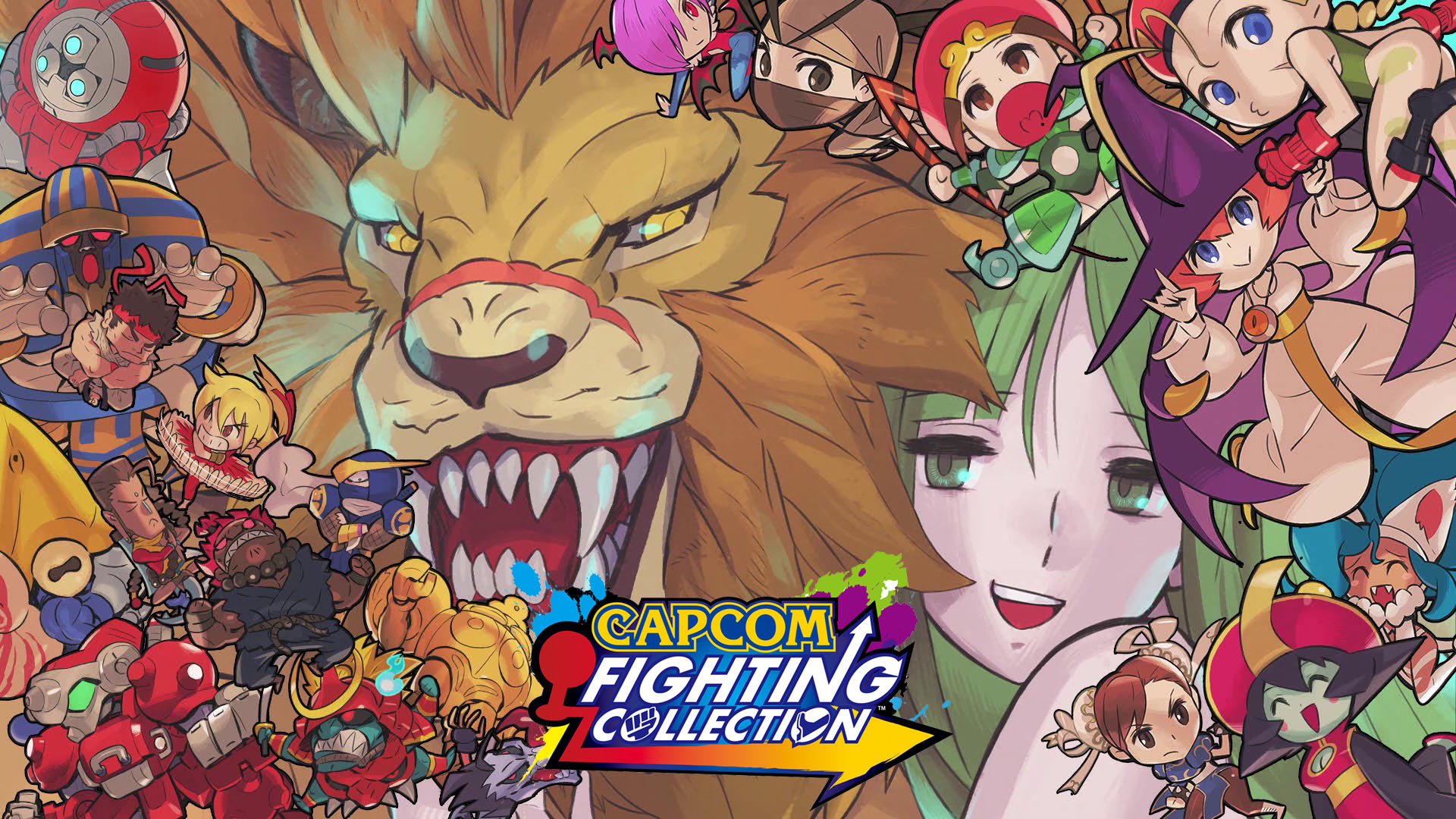
Celebrating the 35th anniversary of Street Fighter and somewhat sending it off before the major release next year of Street Fighter 6 comes the Capcom Fighting Collection of various Capcom fighting games from arcades. Capcom Fighting Collection brings games from the Darkstalkers franchise as well as some other classics. In their masterplan, Capcom plans to preserve their classic titles for many years to come; this is no exception.
Totaling out to 10 games, Capcom has released some of these games from their previous console releases and added new ways to play them and compete against others online. Also for the first time outside of arcades, you can now enjoy Red Earth on home consoles. What new or classic features are in this lost game and how does it hold up? Find out in our review for Capcom Fighting Collection!
Capcom Fighting Collection
Developer: Capcom
Publisher: Capcom
Platforms: Microsoft Windows, Nintendo Switch, PlayStation 4 (Reviewed), Xbox One
Release Date: June 24, 2022
Players: 1-2, 1-9 (online)
Price: $39.99 USD
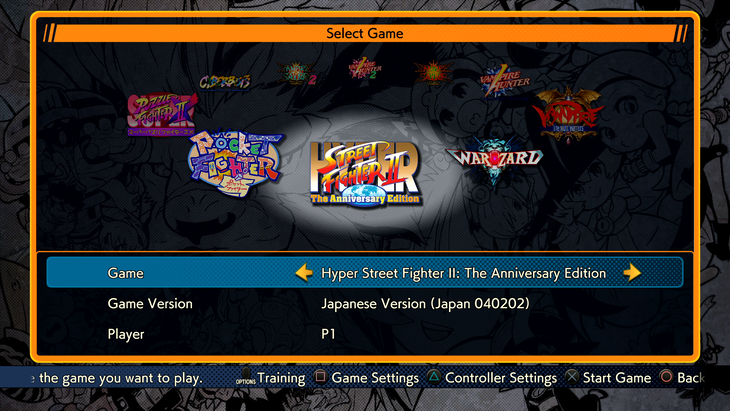
Across every game you can complete a story mode and choose the game version for most games, switching between Japanese and English (USA) versions in the main menu. Games included are Hyper Street Fighter II: The Anniversary Edition, which released in December 2003 in Japanese arcades, all of the Darkstalkers games, Cyberbots, Super Puzzle Fighter II Turbo, Super Gem Fighter Minimix and the aforementioned Red Earth.
Features have been added in like competitive online play with rollback netcode, a training mode for almost every game, and display filters to make your childhood come rushing back even quicker. The training mode has been enhanced to let you customize different properties like Dummy Behavior and training options like Network Delay, which lets you simulate being in an online match with lag. Different display filters can help replicate the look of an analog or arcade monitor and even be used to add in artwork to fill in the black bars on the sides.
Various quality of life features like button customization, difficulty levels, and quick saves help even the most casual player enjoy the game at their leisure. While it does feature one-button special moves, they cannot be implemented in ranked online matches which keeps everything competitive at its core.
Smaller features for the collector like museum mode also give concept art and promotional art available for viewing and the music player, which has over 400 tracks from those games. These small additions to the meat of the collection make this a nostalgic wonderland and showcase of games more interesting for even the newest player.
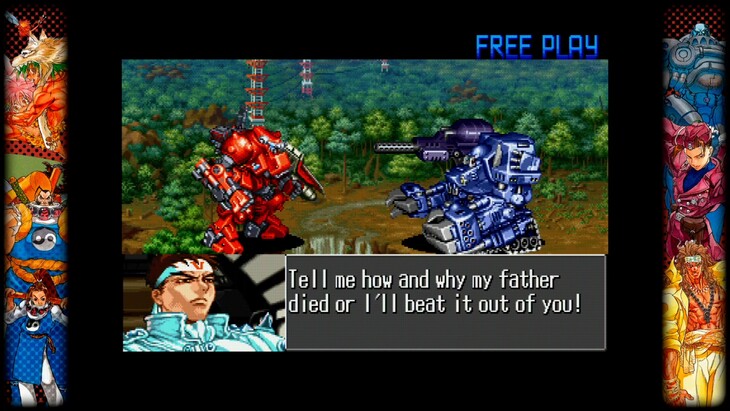
Because every game is a fighting game, your experiences may be the same as far as how Capcom does standard quarter-circle moves, however other games have different mechanics like the Cyberbots boosting. One-button special moves make a return and let you use the triggers for them by default. Every button press is very responsive and in some games you need to be very precise for inputs.
Difficulty is sometimes tough for newer or rusty players but can be adjusted in the main menu before loading a game. Playing Hyper Street Fighter II: The Anniversary Edition requires near precise inputs to overcome your opponent which forces you to sharpen your skills; challenging but brutal. During your standard gameplay, you can use quick saves which acts as a save state; the change up from your typical save states is that you only have one and it’s for whatever game you choose.
Essentially, you can use the save state on Red Earth and once you swap to Cyberbots and attempt to use the quick save feature it will prompt you to ensure you want to overwrite it. On the Nintendo Switch, since it lacks trophy/achievement support, Capcom has added in Fighter Awards, which are specialized challenges from playing a game, completing the game, and doing a special event or events in the game.
From all fronts, Capcom Fighting Collection packs in something for everyone to use and tweak their experience for how they want to play and experiment with these classics and it’s a great positive to have these options.
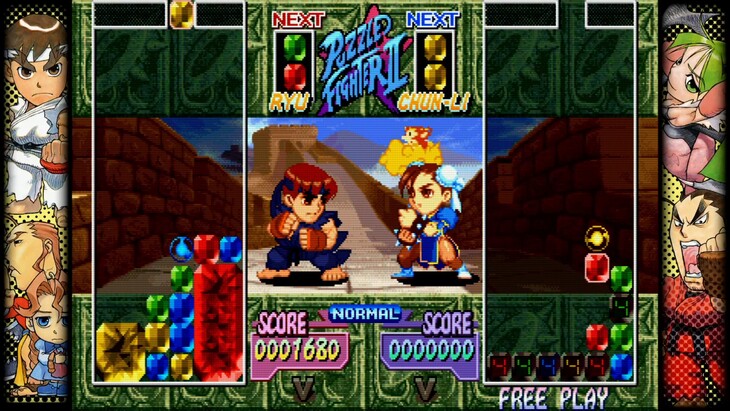
Scanlines with appearances close to analog and arcade monitors give off the retro feel of playing in an arcade a bit more. Character sprites in-game look as they did on their arcade cabinet counterparts and help you appreciate the look of the 90’s. Subsequently, there are a number of filters that can shape your viewing experience; 4:3 aspect ratio, Full, or Wide viewing angles.
On the sides, by default, there is Pop Art of character assets from their respective games. You can choose to remove it and replace it with just black bars or different art. In the museum, you can view illustrations and concept art that comes from each game such as enemies, stages, playable characters and their inputs, and more.
Customization is limited in this regard and you can’t do more outside of selecting things but it doesn’t ultimately hinder the way you can play from a functional standpoint. Personally, the original 4:3 aspect ratio worked fine since I felt like it was too close to my face when playing on a monitor but you may not have this same experience if you play further away on a bigger screen in your living room.
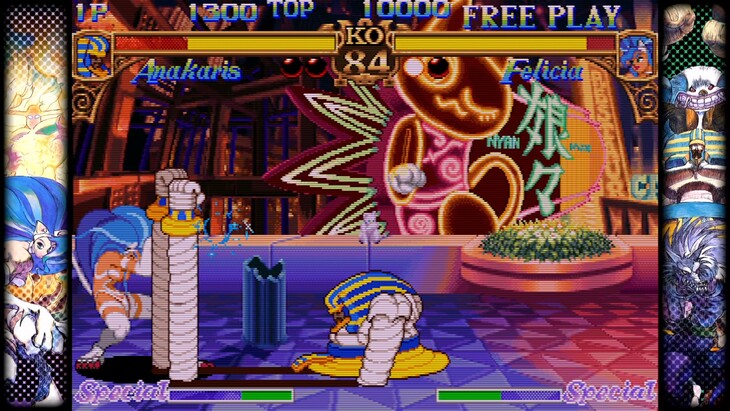
Classic arcade sounds systems come home and feature the same bass and treble as you remember them. Hyper Street Fighter II: The Anniversary Edition has the original sprite work and soundtrack from Street Fighter II from 1992 and it’s for every stage in the game. Sound mixing with sound effects of clanging metal, punches, and energy blasts with the music from dark crypts and Egyptian deserts spark nostalgia.
Boasting over 400 tracks, it features every song from every game in the collection including game over music, intro themes, and credit rolls. Some songs are remixed as well to add more variety for your listening pleasure and to give a little more of a modern flavor instead of just banking off of member-berries.
The title screen music of the game is my personal favorite, unfortunately music played from the museum can’t continue to be played after leaving the menu which is kind of a downer but not a huge deal. However, you can use the music player in the museum while waiting for an online match as opposed to waiting in the lobby.
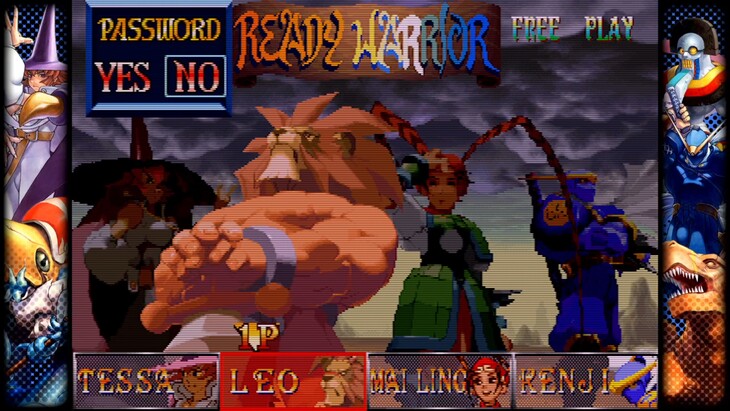
A culmination of classics from the arcade, juggernauts from their time in an era of quarter eating, have finally returned in a new collection directly from Capcom themselves. Digital Eclipse, the game developers for Street Fighter 30th Anniversary Collection, are not involved in this collection which many fans have been critical of. Everything in the Capcom Fighting Collection runs perfect from my memory and would sweep players off their feet again, reliving the glory days of hanging out with friends after school.
While Capcom Fighting Collection costs $39.99, this is a great assortment of games that you can play offline or online with friends. Sharing experiences from playing through the RPG-like fighter of Red Earth that was only in Japanese arcades before now is something that will add more to the conversation. Everything is nostalgic but it doesn’t try to believe in something that’s not there, and that’s why we definitely recommend adding Capcom Fighting Collection to your library.